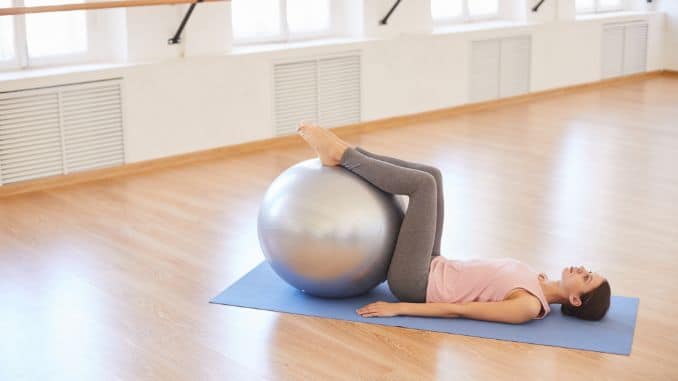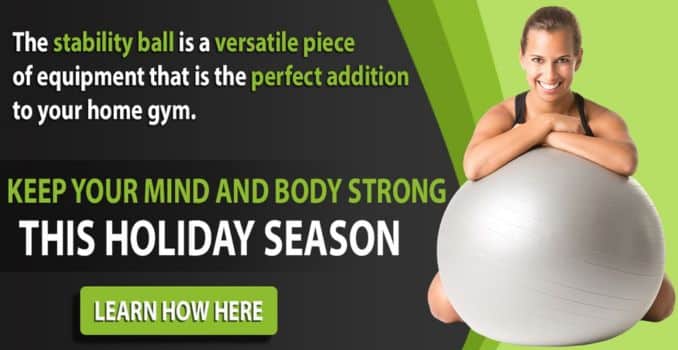Swiss balls are a fantastic solution for those inconvenienced by limited exercise equipment. These versatile, inexpensive tools can transform any space into a personal gym. With a Swiss ball, you can engage in a wide range of effective exercises that target different muscle groups, from core-strengthening planks to challenging squats. Their compact size makes them ideal for home workouts or travel, eliminating the need for bulky machines. Furthermore, instability adds a fun twist to your workouts, making them engaging and enjoyable.
What are Swiss Balls?
Stability ball, also known as exercise ball, balance ball, swiss ball, or birthing ball, offers various benefits to the body when integrated into fitness or rehabilitation routines. Moreover, this versatile tool can enhance core strength, balance, and stability as it engages the core muscles and promotes better posture for sitting or exercises. The ball's instability also challenges the body, improving muscle engagement, flexibility, and joint mobility.
Physical therapists often use these exercise balls in physical therapy and rehabilitation programs, and they can contribute to better spinal health by reducing lower back pressure. While not primarily designed for cardiovascular workouts, stability balls can add a fun and diverse element to exercise routines, helping individuals stay motivated.
The Versatility of Swiss Ball Exercises
1. Core Training
The Swiss ball serves as a dynamic platform for core training, engaging deep abdominal muscles and stabilizers in a way traditional exercises may not. Whether performing crunches, planks, or rotations, the unstable surface of the Swiss ball challenges the core to maintain balance, promoting greater muscle activation and a comprehensive core workout.
Swiss ball exercises seamlessly integrate with weight training, offering an unstable surface that requires increased muscle recruitment. From dumbbell exercises to squats, the ball enhances proprioception and forces muscles to work in synergy, fostering improved strength, stability, and coordination, making it an invaluable tool for enhancing traditional weight training routines.
3. Balance Training
Utilizing a Swiss ball for balance training enhances proprioception and stability, benefiting individuals across various fitness levels. Whether performing single-leg exercises or balance-focused movements, the ball forces the body to adjust constantly, improving overall stability and minimizing the risk of injuries. Moreover, its adaptability makes it an ideal tool for athletes, seniors, and anyone seeking to enhance their balance and coordination.
4. Posture Correction
Swiss ball exercises promote proper posture by engaging core muscles and promoting spinal alignment. Incorporating exercises like back extensions and pelvic tilts encourages a neutral spine position, helping to counteract the negative effects of prolonged sitting. Regularly using the Swiss ball as a posture correction tool can alleviate discomfort and contribute to a more ergonomic and healthy posture.
5. Muscle Activation
The Swiss ball excels in activating muscles that may be underutilized in traditional exercises. From targeting stabilizing muscles in the shoulders during push-ups to engaging the hamstrings in ball bridges, its versatile applications facilitate comprehensive muscle activation. This not only enhances overall strength but also helps address muscular imbalances for a well-rounded and functional physique, reducing the risk of injuries and promoting optimal performance in various physical activities.
Full-Body Exercise with Swiss Ball
Warm-Ups
1. Arm raises with the Ball
Begin in an upright standing position with one foot forward, while maintaining good alignment with your head, shoulders, and hips. Hold the stability ball with both hands in front of your body. Engage your core and bring the ball overhead. Lower the ball back down to the starting position and repeat the movement. Perform with 1 set of 10 repetitions.
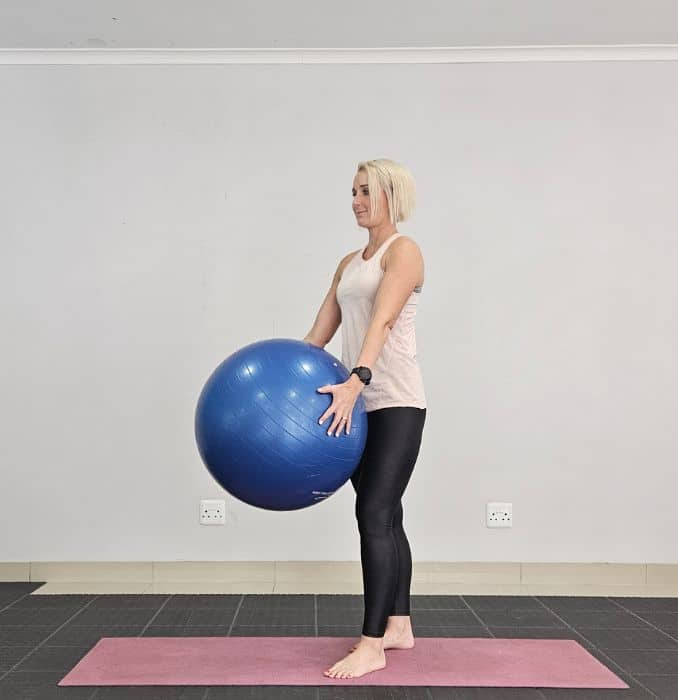 |
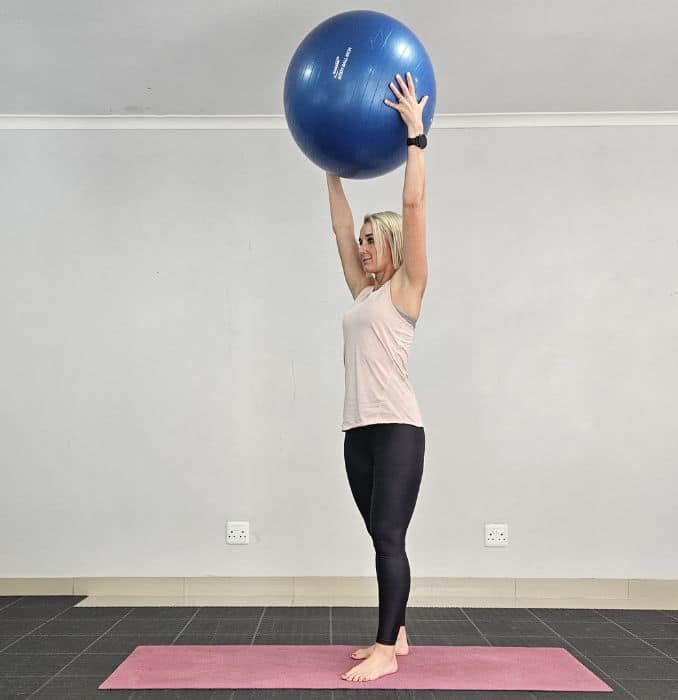 |
Arm raises with Ball
2. Side Twist with Ball
Begin in an upright standing position with your feet shoulder-width apart, while maintaining good alignment with your head, shoulders, hips, and legs. Hold the stability ball with both hands at chest level. Engage your core and rotate your upper body from side to side while keeping your hips in a forward position. Moreover, perform with 1 set of 10 repetitions on each side.
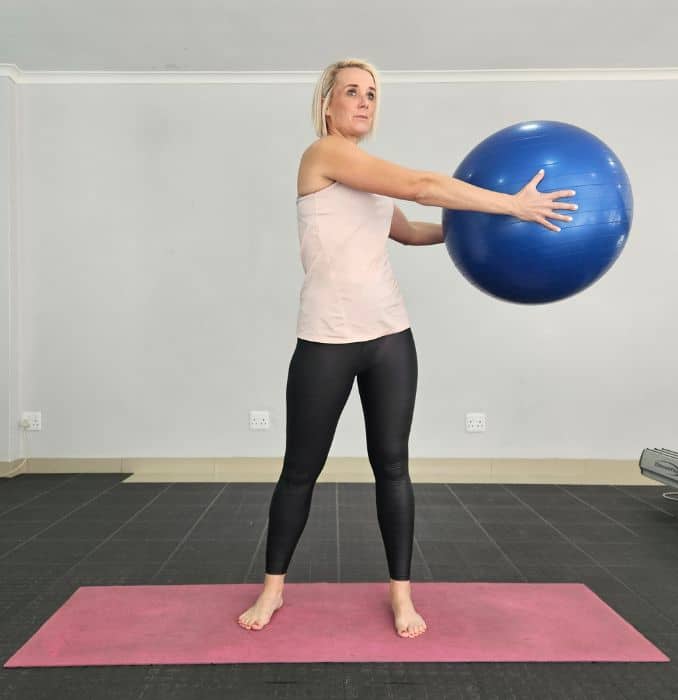 |
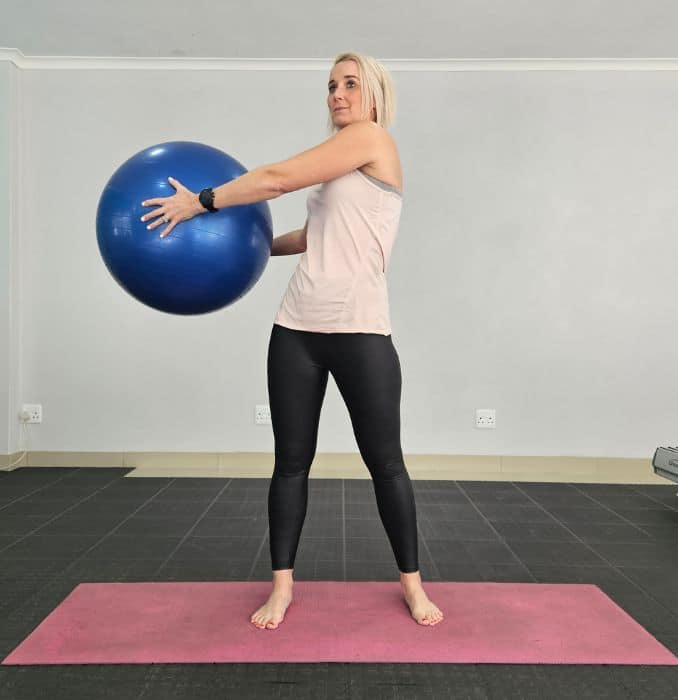 |
Side Twist with Ball
3. Stability Ball Squat
Begin in an upright standing position in front of the stability ball with your feet considerably wider than shoulder-width apart and your toes pointing slightly outward. Maintain a good alignment in your upper body. Bend forward to place both hands on top of the exercise ball. Contract your abdominal area, then bend your knees and hinge through your hips to lower your seat into a squat position, pushing the ball forward. Then raise back up to the starting position and repeat the movement. Start with 1 set of 10 repetitions.
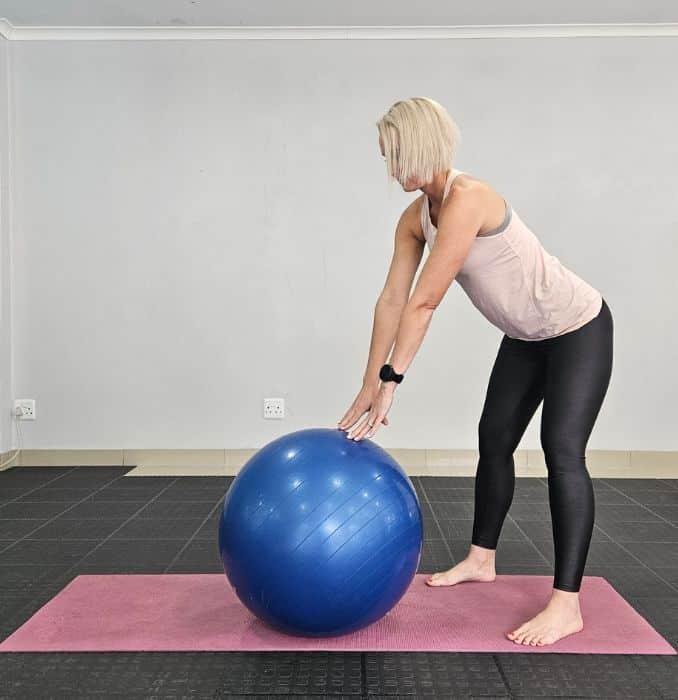 |
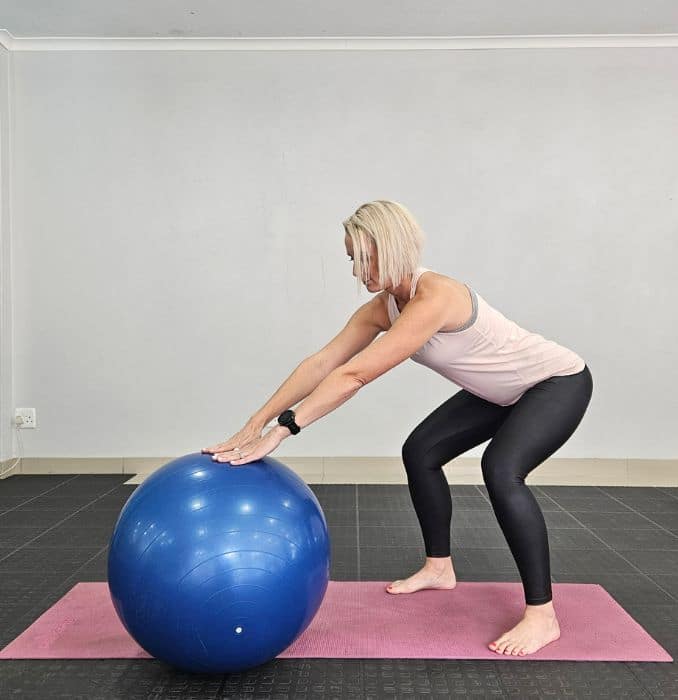 |
Stability Ball Squat
Routines
1. Stability Ball Wall Squat
For this exercise, you will need a wall or a sturdy, upright surface behind you.
Begin by standing with your feet shoulder-width apart with the stability ball positioned between your back and the wall. Move your legs out slightly and lean into the exercise ball. Bend your knees to move into a squat position, ideally bringing your knees to a 90-degree angle. Raise back up and repeat the movement. Start with 1 set of 10 repetitions.
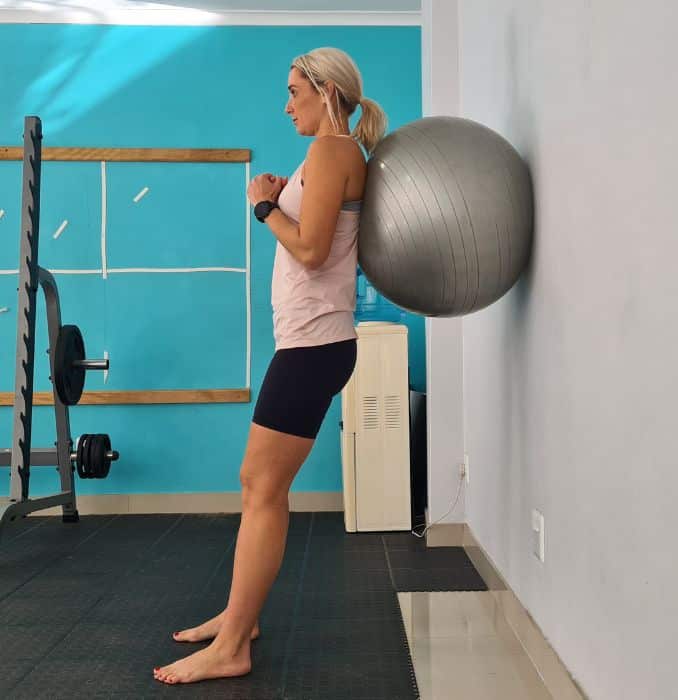 |
 |
Stability Ball Wall Squat
2. Leg Squeezes
Begin in an upright standing position with your feet considerably wider than shoulder-width apart, maintaining a good alignment with your head, shoulders, and hips. Position the stability ball between your legs. Place both hands on your waist and tighten your core. Squeeze the ball with both legs and hold this position for a couple of seconds. Relax and repeat the movement. Start with 1 set of 10 repetitions.
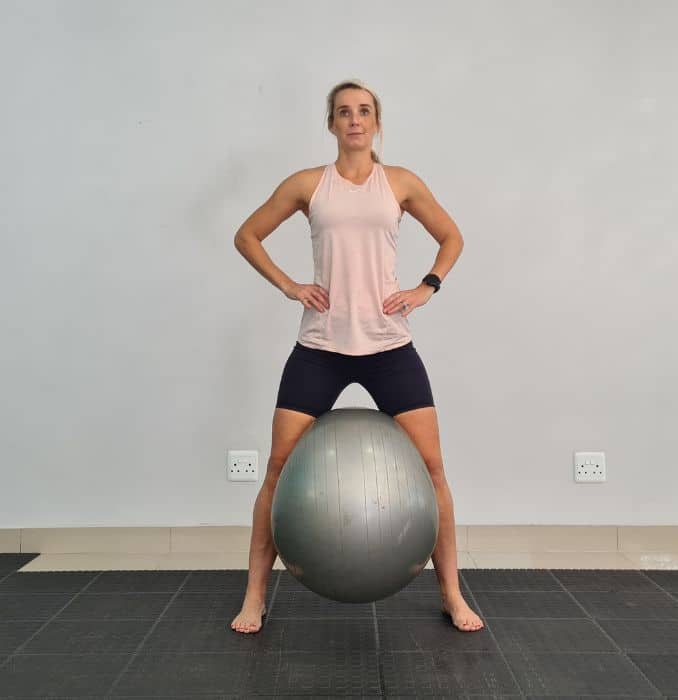
Leg Squeezes
3. Stability Ball Crunch
Lie on your back on the stability ball with your knees bent and feet flat on the floor. Cross your arms over your chest, maintaining good alignment with your head, shoulders, hips, and knees. Engage your core and crunch your upper body forward. Lower your upper body to the starting position and repeat the movement. Start with 1 set of 10 repetitions.
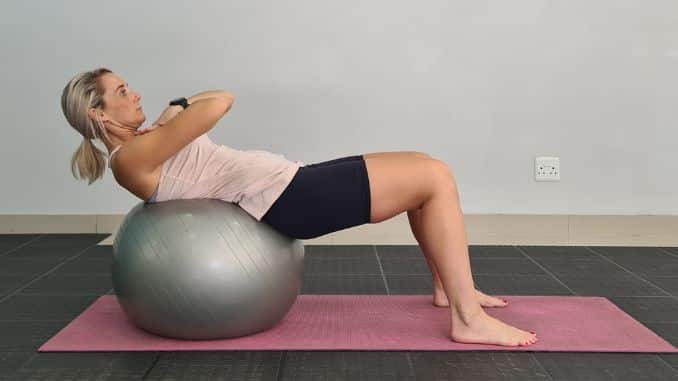 |
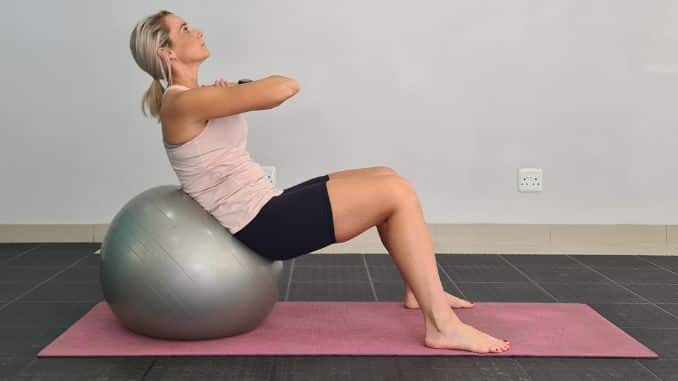 |
Stability Ball Crunch
4. Stability Ball Bridge
Begin in an upright sitting position on the stability ball, maintaining good alignment with your upper body. Contract your core, then walk your feet forward, rolling the ball up your back until your shoulders are positioned on the stability ball. Place your hands on your waist. Contract your core. Lower your hips down to the floor, then push from your heels to raise back up, squeezing your glutes at the top. Hold this position for 5 seconds. Relax and slowly lower your hips to return to the starting position. Repeat the movement for 1 set with 10 repetitions.
 |
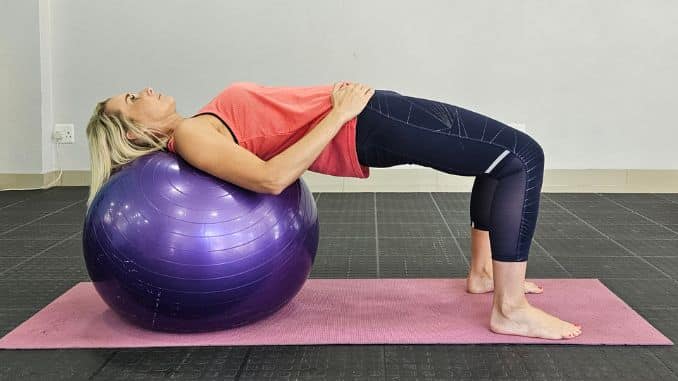 |
Stability Ball Bridge
5. Stability Ball Back Extension
Lie on your stomach on top of the stability ball with your feet wider than shoulder-width apart, stacking your heels over your toes. Wrap your arms around the stability ball for safety and support. Contract your core muscles and roll your upper body forward, arching your back to extend your upper body back. Focus on the stretch happening in your lower back area. Return to the starting position by carefully rolling the stability ball back towards your hips, creating a rounded position in your spine. Repeat the movement, creating a gentle rocking motion along your spine with the help of the ball.
Perform the rolling motion for about 1-2 minutes, or as long as it feels comfortable and beneficial. Increase the duration of the exercise gradually as your comfort and flexibility improve.
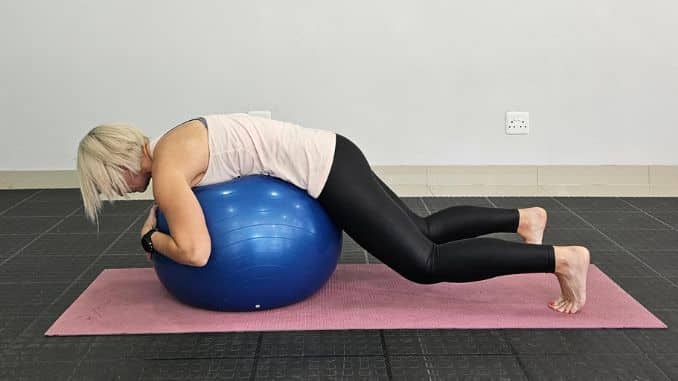 |
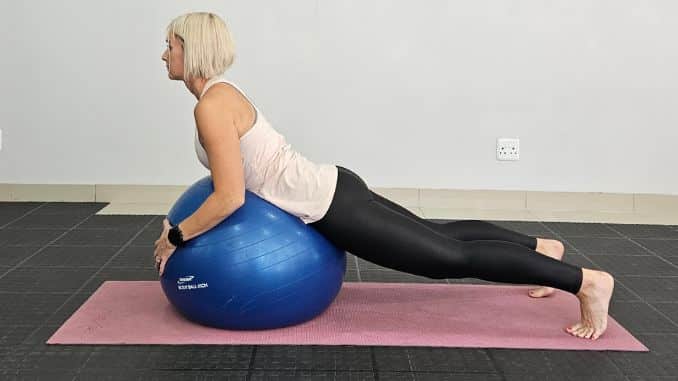 |
Stability Ball Back Extension
6. Wide-Legged Child's Pose with Stability Ball
In this Swiss ball workout, begin in an upright kneeling position in front of the exercise ball with your knees considerably wider than hip-width apart. Engage your core muscles and shift your hips back to your feet while extending both arms on top of the exercise ball. Lower your head between your arms, keeping your upper body parallel to the floor. Hold the position for about 30 seconds to 1 minute or as comfortably as you can hold.
Gradually increase in resistance throughout performing the stretch test, as your comfort and flexibility improve. Experiment with arm positioning; try moving arms slightly to the sides for a different stretch.

Wide-Legged Child’s Pose with Stability Ball
Tips to Power up Your Swiss Ball Routine
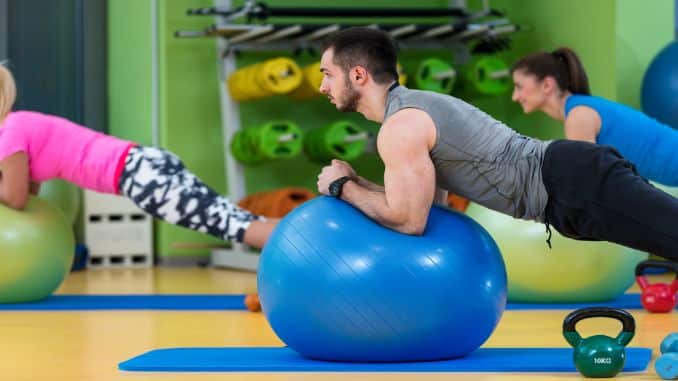
1. Optimize Static Weight Capacity
To maximize the effectiveness of your Swiss ball routine, ensure you choose a ball with a static weight capacity that accommodates your body weight and any additional loads from exercises. This guarantees a safe and stable surface, enabling you to perform a diverse array of dynamic movements without compromising the integrity of the ball.
2. Enhance Stability with Anti-Burst Technology
Selecting a Swiss ball equipped with anti-burst technology adds extra safety to your workout. This feature minimizes the risk of sudden deflation, providing a stable platform for exercises that engage your core and improve balance, making your routine effective and secure.
3. Diversify with Other Tools
Elevate your Swiss ball routine by incorporating diverse tools such as dumbbells and resistance bands. Integrate targeted exercises to engage different muscle groups, amplifying the benefits of stability training and promoting overall strength development.
4. Transform Your Workspace with an Exercise Ball Chair
Upgrade your office chair to an exercise ball chair to integrate core engagement into your daily routine seamlessly. This ergonomic alternative promotes better posture and helps prevent the negative effects of prolonged sitting, turning your workspace into an opportunity for fitness and wellness.
5. Choose the Right Ball for Your Needs
Evaluate your fitness goals and preferences to determine the ideal Swiss ball for your routine. Whether it's a Pilates ball for precise movements, a Bosu ball for added instability, or a standard exercise ball for versatile workouts, tailoring your choice to your needs ensures a more targeted and effective exercise experience.
Conclusion
Swiss Balls are versatile exercise tools that offer a distinctive and effective way to engage multiple muscle groups, improve balance, and enhance core strength. Swiss ball exercises can be adapted to various fitness levels and help prevent injuries by promoting better posture and stability. Furthermore, incorporating Swiss balls into one's workout routine adds an element of fun and novelty, facilitating sustained motivation and consistency over time. Incorporating Swiss ball exercises into your fitness routine enhances strength and stability. It aligns with principles endorsed by sports medicine experts, emphasizing functional movements crucial for injury prevention and overall athletic performance.
Staying on track with a regular exercise routine is important for achieving and maintaining fitness goals. Swiss ball exercises can be a valuable component of this routine, offering variety and enjoyment, which can help individuals maintain their commitment to regular physical activity. Consistency in one's exercise regimen is essential for physical health and mental well-being, as regular workouts release endorphins and reduce stress. By integrating Swiss ball exercises and staying on track with a routine, individuals can make exercise an integral part of their lifestyle, leading to better health, strength, and overall quality of life.
Experience a healthier you with our Stability Ball 101! Elevate your fitness game with exhilarating Swiss Ball workouts. Roll into a stronger core, improved balance, and overall well-being. Ready to transform? Start your journey now!


